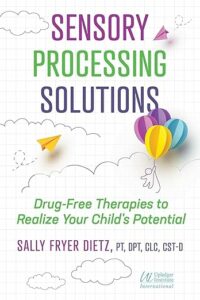
A guide to help you find the right therapy program for your child
• Explores many non-medication therapy methods, such as Sensory Integration Therapy and CranioSacral Therapy, to help children with sensory processing disorders and other developmental glitches
• Details common signs of SPD at each developmental stage from infancy to grade school
• Presents success stories from the author’s own family and from her sensory integration therapy clinic
Every person—whether baby, child, teenager, or adult—interacts with the world in their own unique way. Yet some have a harder time than others due to a variety of sensory processing issues, which can lead to motor delays, learning differences, frustration, anxiety, and emotional, behavioral, and social challenges as well as diagnoses like ADHD and “autism spectrum.” As sensory integration expert Sally Fryer Dietz reveals, these children are not “broken.”
Speaking from both her decades of professional experience as well as her own journey to help her oldest son, Dietz shares in-depth guidance to help you find the right therapeutic support for your child. Detailing common red flags at each developmental stage, from infancy to grade school, she explains how children with sensory processing “glitches” are often misunderstood and put on medication rather than in therapies that can help them succeed naturally. Sharing how difficult it was to hear from her son’s teachers that he was having more challenges in school than his peers, she presents success stories from her family and from her sensory integration therapy clinic. She outlines therapies and treatments for body and mind that can help improve your child’s sensory motor development and function, such as sensory integration-based occupational, physical, and CranioSacral therapy.
No matter where your child is on the spectrum of sensory motor integration, this guide showcases effective solutions beyond medication and can help you figure out what options are available to help children grow into happy and productive adults.
